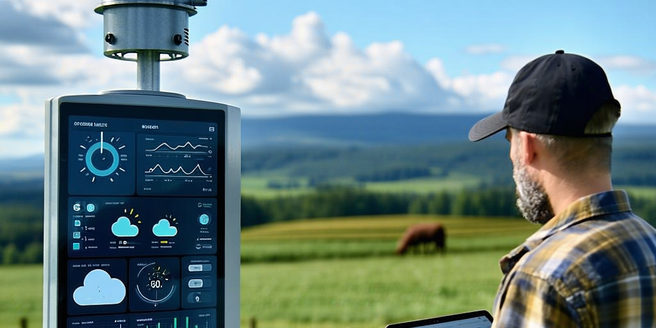
Understanding the Basics of IoT and Weather Stations
IoT connects everyday devices to the internet, enabling data exchange and automation. Weather stations, equipped with sensors, gather climate data like temperature, humidity, and wind speed. When linked to IoT, these stations can transmit real-time data to cloud platforms for analysis. This connectivity allows for precise weather predictions, helps in agricultural planning, and even enhances disaster management. The integration process involves selecting proper sensors and communication protocols. It is essential to regularly update the software to ensure compatibility with the latest IoT technologies. Systems must be scalable and adaptable for future technological advancements. Secure data transmission is crucial to protect against breaches. By understanding these basics, one can effectively harness the potential of IoT and weather stations.
Selecting the Right IoT Platform for Your Weather Station
Choosing the correct IoT platform is critical. Consider the compatibility of the platform with your weather station’s hardware and software. Evaluate the platform’s ability to handle the data volume and its scalability for future expansions. Ensure the platform can integrate seamlessly with existing systems and workflows. It’s beneficial to consult with industry professionals to gain insights into the most effective options. Look for platforms that offer robust security features, as data breaches could compromise sensitive information. User interface and support are also essential—opt for platforms with an intuitive design and responsive customer service. Cost is another important factor; compare pricing models to ensure the platform fits within your budget. Finally, verify the platform’s credibility by checking reviews and case studies from other users in similar applications.
Step-by-Step Guide to Integrating Weather Stations with IoT
Begin by assessing your weather station’s current capabilities and identifying necessary upgrades for IoT compatibility. Next, select suitable sensors and ensure they have accurate calibration. Choose a reliable communication protocol like MQTT or HTTP for data transmission. If you’re not familiar with these protocols, consider consulting documentation or experts for guidance. Set up a local gateway to handle data processing and ensure seamless communication with cloud services. After installation, configure the IoT platform to receive, store, and analyze data from your weather station. Test the system to verify data is transmitted and received accurately. Regularly update the software to incorporate new features and security patches. Lastly, train personnel to operate and maintain the system effectively.
Data Management and Analysis in IoT-Connected Weather Stations
Effective data management is key for IoT-connected weather stations. Begin by storing collected data in a secure cloud database, ensuring it is properly structured for analysis. It is also beneficial to assign data ownership to specific personnel for accountability. It is essential to regularly update the database to maintain data accuracy and relevance. Utilize data analytics tools to process and interpret the information, which can forecast weather patterns or trigger specific actions. Implement machine learning algorithms for predictive analytics to optimize decision-making processes. Regularly back up data for recovery purposes and to prevent loss. Custom dashboards can be developed for real-time monitoring, providing user-friendly insights. Practicing data integrity and privacy precautions will ensure compliance with regulatory standards.
Ensuring Security and Privacy in IoT Weather Networks
IoT weather networks require strong security measures to protect sensitive data. Start by encrypting data during transmission to prevent unauthorized access. Implement authentication protocols to verify the identity of users accessing the network. Use firewalls and intrusion detection systems to monitor and block suspicious activities. Additionally, consider segmenting the network to limit the impact of any potential breach. Regularly update all software to patch vulnerabilities and enhance security. It’s also crucial to establish a response plan for potential security breaches. Conduct security assessments periodically to identify and address potential risks. Educate users on best security practices, such as the importance of strong passwords and recognizing phishing attacks. Compliance with data protection regulations, such as GDPR, ensures adherence to standards and builds trust with users.
